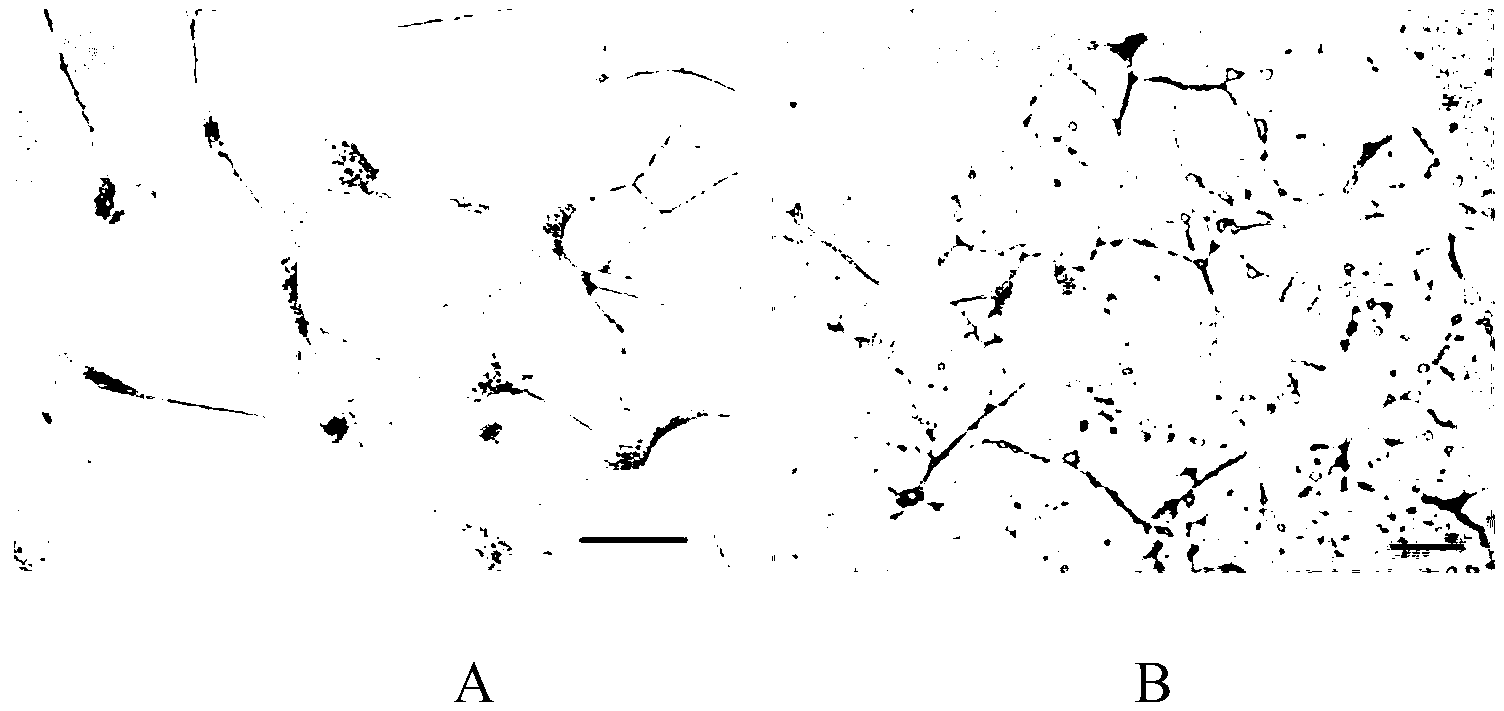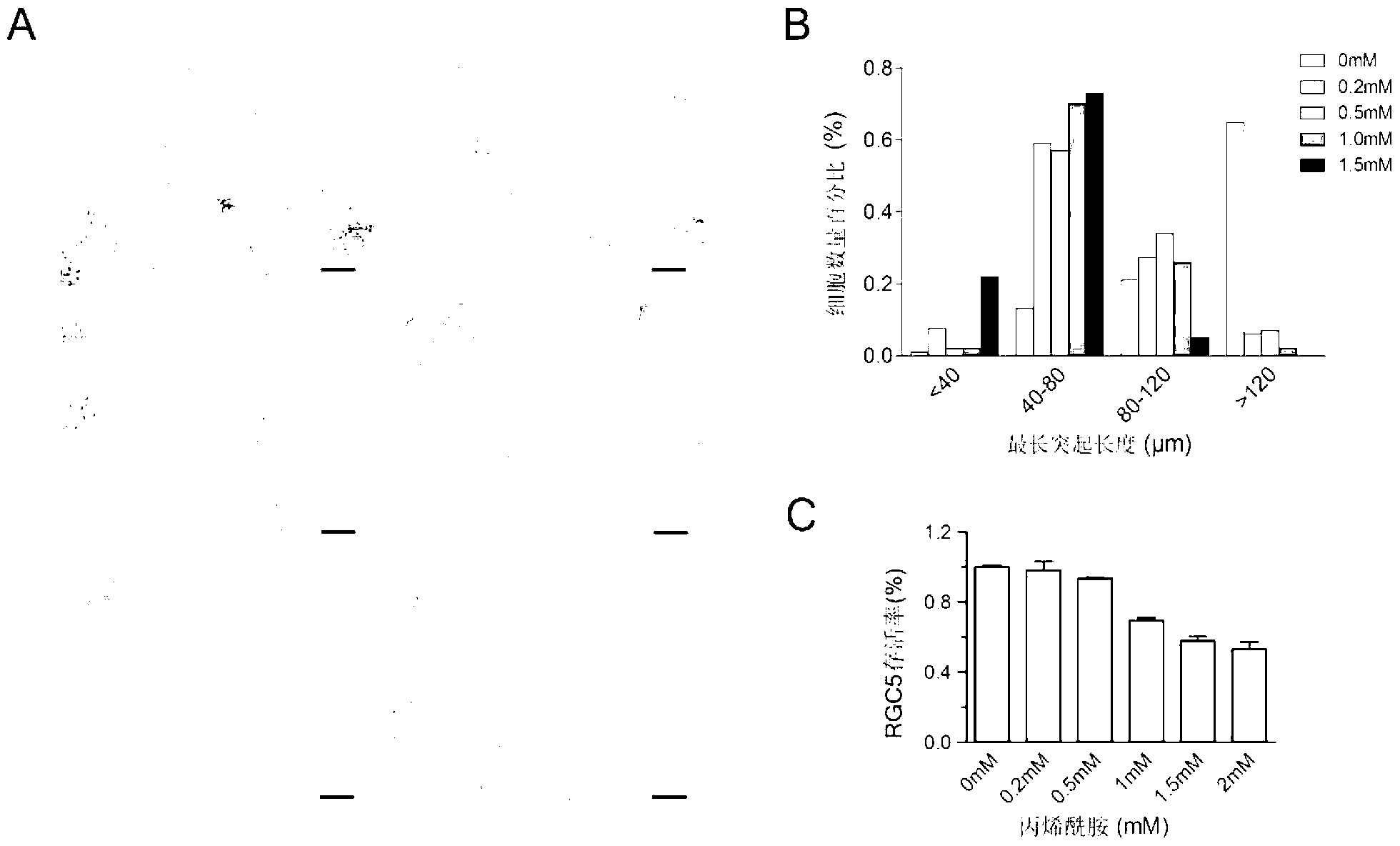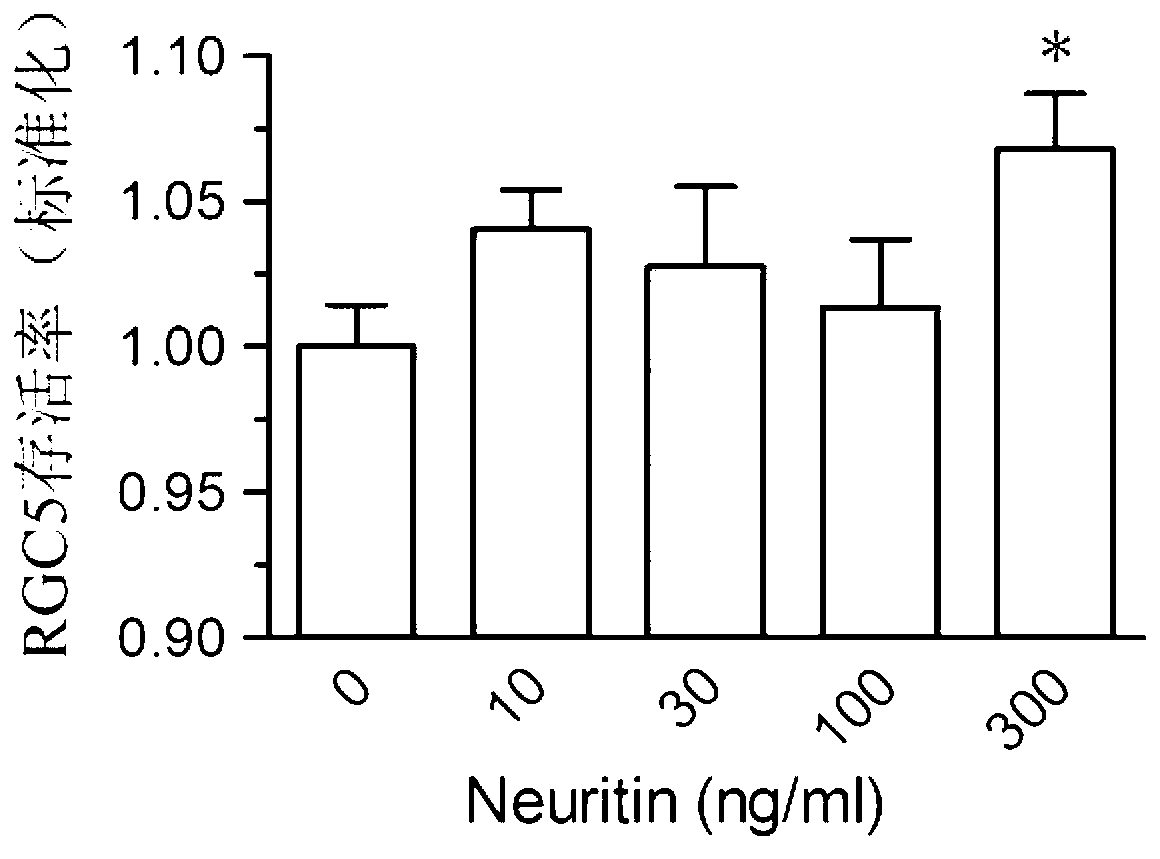Type-II adeno-associated virus carrying neuritin genes and application thereof in restoring optic nerve injuries
A gene and virus technology, applied in the application field of type Ⅱ adeno-associated virus, repairing optic nerve damage, to achieve the effect of enhancing internal regeneration ability, promoting optic nerve regeneration, improving survival and regeneration
- Summary
- Abstract
- Description
- Claims
- Application Information
AI Technical Summary
Problems solved by technology
Method used
Image
Examples
Embodiment 1
[0044] 1. Construction of Neuritin gene type Ⅱ adeno-associated virus expression vector
[0045] (1) Type II adeno-associated virus expression vector and enzyme digestion of target gene
[0046] The pAOV-CAG-eGFP vector (purchased from Addgene) was used to carry out enzyme digestion with Not I and Mlu I, and the digested vector was prepared for use in vector construction. Using the cDNA clone of the CDS region of the NRN1 gene as a template, the NRN1 gene fragment was amplified by PCR, and the product was digested with Not I and Mlu I, and the vector and target gene DNA were recovered after identification by agarose gel electrophoresis.
[0047] (2) Ligation reaction
[0048] The digested type II adeno-associated virus vector and the PCR product of the NRN1 gene were ligated according to the reaction system in Table 1.
[0049] Table 1: Ligation reaction system
[0050]
[0051] After the above reagents were mixed, they were ligated at 4°C for 12 hours to prepare the cloni...
Embodiment 2
[0066] 1. Culture and induction of RGC5 differentiation
[0067] RGC5 is the retinal ganglion cell line of a one-day-old rat (see [20] Krishnamoorthy RR, Agarwal P, Prasanna G, et al. Characterization of a transformed rat retina ganglion cell line. Brain Res Mol Brain Res. 2001; 86(1-2):1-12.), immature, first induced by staurosporine to differentiate into mature neuron-like cells ( figure 1 ). RGC5 before induction was cultured in high-glucose DMEM medium and 5% serum in a place containing 5% CO 2 , in an incubator at 37°C, and the cells were passaged once a day. When used, 326nM staurosporine was used to induce for 24 hours.
[0068] 2. Overexpression of Neuritin gene and establishment of RGC5 injury model
[0069] When RGC5 was cultured to 80% confluence, add the appropriate amount of type II adeno-associated virus and a certain amount of polybrene at a pre-measured concentration, and replace it with normal medium after 24 hours, observe the expression of RFP with a flu...
Embodiment 3
[0081] 1. In vivo transfection of retinal ganglion cells with type Ⅱ adeno-associated virus and overexpression of Neuritin
[0082] Inject neuritin type Ⅱ adeno-associated virus into the vitreous body, and perfuse the mice with 4% paraformaldehyde one week later, take retinal slices, and use immunohistochemical β-Ⅲ-tubulin staining or cholera toxin B subunit (CTB) injection to co-localize the retina Ganglion cells to observe the transfection effect, the transfection efficiency is about 90% or more (such as Figure 5 shown).
[0083] Western blot and immunohistochemical methods were used to observe the overexpression and localization of Neuritin protein after Neuritin type Ⅱ adeno-associated virus transfection.
[0084] 2. Establishment of Optic Nerve Injury Model
[0085] The present invention adopts the optic nerve crush model, and uses Yasargil cerebral aneurysm clip to clip the optic nerve of adult male rats about 1 mm behind the eyeball and wound for 9 seconds. For speci...
PUM
 Login to View More
Login to View More Abstract
Description
Claims
Application Information
 Login to View More
Login to View More - R&D
- Intellectual Property
- Life Sciences
- Materials
- Tech Scout
- Unparalleled Data Quality
- Higher Quality Content
- 60% Fewer Hallucinations
Browse by: Latest US Patents, China's latest patents, Technical Efficacy Thesaurus, Application Domain, Technology Topic, Popular Technical Reports.
© 2025 PatSnap. All rights reserved.Legal|Privacy policy|Modern Slavery Act Transparency Statement|Sitemap|About US| Contact US: help@patsnap.com



